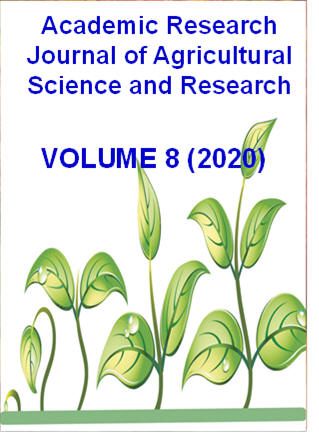|
ISSN: 2360-7874 |
Academic Research Journal of
Agricultural Science and Research |
|||||||||||||||||||
|
Vol. 8(4), pp. 284-315, May 2020 Research Effects of Interseeded Green Manure Legume Species and Termination Time on the Performance of Maize (Zea Mays L) Crop and Soil Characteristics
Hailu Garkebo1* and Girma Abera2 1. Ethiopian Institute of Agricultural Research, Wondo Genet Agricultural Research Center, P.O.Box 198, Shashemene, Ethiopia 2. Hawassa University College of Agriculture, P.O.Box 05, Hawassa Ethiopia Corresponding authors email: garkebo@gmail.com
Accepted 28 May 2020
This research experiment was conducted to examine the effects of intercropped legume species and their termination time (incorporation dates) on the performance of maize (Zea mays L) crop and soil characteristics. The experiment was laid out in randomized complete block design (RCBD) in a factorial combination of three termination times and the three maize-legume combinations along with sole maize as a control treatment. Maize variety, BH-540 was planted and then three legume species Lablab (Lablab purpureus), Cowpea (Vigna unguiculata) and Vetch (Vicia villosa) were simultaneously intercropped and incorporated into the soil at 30, 45 and 60 days after planting between the maize rows. Most of the growth (days to silking, plant height, leaf area) and yield parameters (maize kernel rows, kernels, maize stover, grain yield) of maize crop were significantly (P<0.05) influenced by the treatments involved. Significantly highest maize grain yield (7.78 t ha-1) was obtained when cowpea biomass incorporated. Similarly, the highest maize grain yield was obtained when green manures were terminated at 30 days after planting. The results indicated the highest N recovery in maize stover and grain was obtained due to cowpea incorporation. However, the total N recovery (stover and grain) was very low (-45.62 to 17.47 kg ha-1). This suggests the release of N from green legumes and its synchronization was not sufficient to satisfy the demand of maize plant needs for growth, stover and maize grain yield production and to improve soil characteristic. The highest biomass and N yield were applied to soil in the order of lablab > cowpea > vetch within the range of 0.39 t ha-1 to 2.11 t ha-1 and 8.37 kg ha-1 to 76.03 kg ha-1 respectively. The economic analyses revealed that green legume cowpea and incorporation at 30 days after planting generated an income of 87 %and 34 % per Birr invested respectively.
Key words: Green-manure, legumes, termination-time, N recovery, economic advantage, residue.
How to cite this article (APA Style): Hailu G., Girma A (2020). Effects of Interseeded Green Manure Legume Species and Termination Time on the Performance of Maize (Zea Mays L) Crop and Soil Characteristics. Acad. Res. J. Agri. Sci. Res. 8(4): 284-315
|
|||||||||||||||||||
